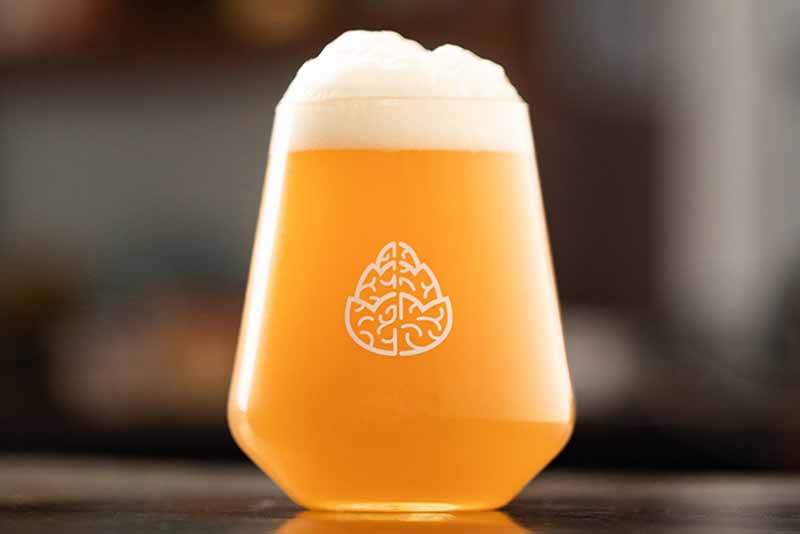
Hazy IPA is to American craft beer as The Beatles are to rock music—timeless and incredibly popular.
The haze craze in the craft beer industry has grown immensely over the past decade and shows no signs of slowing down. According to the latest data from Untappd, the style ranked as the second-most popular in 2021, with over six million check-ins, just behind the American IPA.
Americans love hazy IPAs because they’re like gateway beers with all that hop character—namely, the juicy, citrusy varietals—but also minimal bitterness.
To stay on trend, how can you brew the best hazy IPA? What are some of the key malts and hops to use? And what tips and tricks do brewers use around the industry?
We sat down with four brewers from WeldWerks, Our Mutual Friend, Cerebral, and Two Roads to find the answers.
Affordable, Industry-Leading Brewery Software
How to Build a Recipe for a Hazy IPA
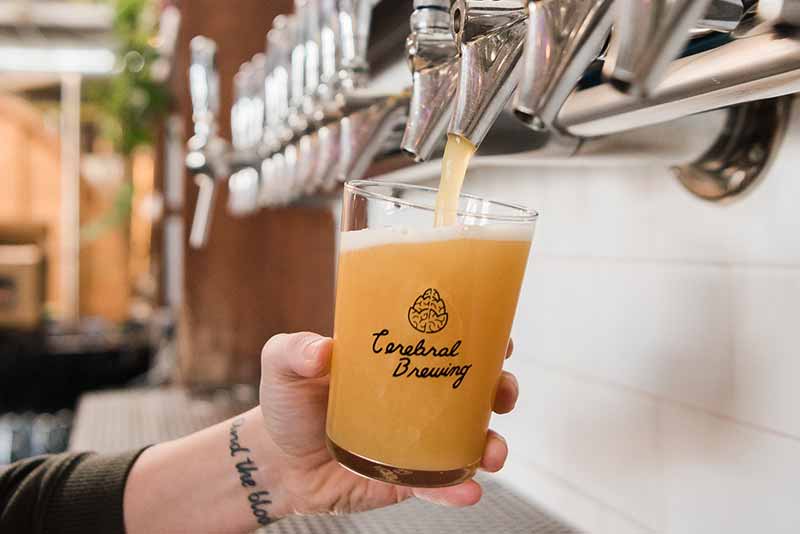
Photography courtesy of @cerebralbrewg
In essence, the hazy IPA is simple to brew. These beers must be creamy, with a somewhat chewy mouthfeel and a subtle sweetness. The style is loaded with hops—dropped while the wort is hot, either late in a boil or during the whirlpool post-boil, as well as during the dry-hopping phase.
Despite the seemingly simplistic recipe, brewers nationwide all have their own views on the best way to concoct a hazy IPA. For WeldWerks Brewing Co. Head Brewer Skip Schwartz, hazies are all about the hops.
“Whether it is smelling a new hop, revisiting a hop you haven’t had in a while, or trying another brewery’s hazy IPA, hops always come to mind [when creating a hazy IPA recipe],” Schwartz says. “We are constantly looking for new things to try and experiment with, but even if we are changing the grist bill on a hazy IPA, we are always doing it with what will showcase the hop blend we are working with the best.”
Conversely, Our Mutual Friend Brewing Company Head Brewer Jan Chodkowski, whose flagship hazy IPA Neon Nail received a 90/100 ranking in Craft Beer & Brewing, looks for the perceived standard eye and nose appeal a hazy IPA typically delivers.
“The best version of a hazy IPA is something with a huge aroma—the citrus aroma is usually what I’m going for,” he says. “Visually, I like an ultra pale yellow, creamy-looking color and a thick white head as well.”
Other brewers, like Two Roads Brewing Company Brewmaster Phil Markowski and Cerebral Brewing’s Co-Founder and Head Brewer Sean Buchan, look to deliver harmony with their recipes.
“It’s all about balance,” says Markowski, who has been brewing commercially since the late 1980s. “Hazy IPAs aren’t the hallmark of balance, but it’s still a style that we try to balance and showcase the classic beer ingredients.”
Buchan says that Cerebral has brewed the style since the company launched seven and a half years ago.
“Over the years, we’re leaned more sweet, more bitter,” he says. “But really, we just come back to that balance and drinkability—making sure the final gravity isn’t too high, getting enough hop character, a little bit of malt character, and some yeast esters in there, and just bringing it back to the balance of all of those elements.”
The Best Malts and How to Use Them in a Hazy IPA

Photography courtesy of @tworoadsbrewing
The grist is an integral part of making a hazy IPA. While a West Coast IPA relies mainly on pale malts, the hazy IPA builds off the base malts with additions of flaked or malted wheat and oats to generate the visual haze.
“We generally stick with pilsner malt [for our base malt],” says Chodkowski. “And to get that visual, to get that creamy, hazy-looking beer, we use wheat, and flaked oats, flaked wheat, and sometimes malted oats as well, and different combinations [of those ingredients] for different beers.”
Like Chodkowski at Our Mutual Friend, Cerebral switches up its grist for the various hazy IPAs they brew but sticks to similar principles. Buchan says their flagship hazy IPA, Rare Trait, uses Proximity two-row malt while sometimes blending in Golden Promise base malts for added sweetness.
“We lean on wheat and oats. It tends to just be white wheat, and some flaked oats, and maybe some golden naked oats,” Buchan adds. “But we shift things around depending on the hop schedule, the beer, and what we’re looking for.”
Schwartz explains how in their popular Juicy Bits hazy IPA, they use eight percent flaked oats, eight percent flaked wheat, and eight and a half percent white wheat in addition to a forty-five/fifty-five percent split between pale and pilsner base malts, respectively. But they don’t stick with any set grist, and that’s for good reason.
“We have done beers with only one of the two for a base, and we have done beers with huge amounts of flaked oats or high wheat additions. We have used malted oats; you name it, and we have tried it,” he says. “Experimentation is the best teacher, and we like to think we learn something new with every batch of hazy IPA we create, even if it is just another batch of Juicy Bits.”
For Markowski and his highly rated Two Juicy hazy IPA, he says they use malted wheat and flaked oats with a base of pilsner malts. According to Markowski, Two Roads chooses malted wheat based on studies showing it provides a better haze than that of raw wheat.
A Few of Brewers’ Favorite Hops to Use in a Hazy IPA
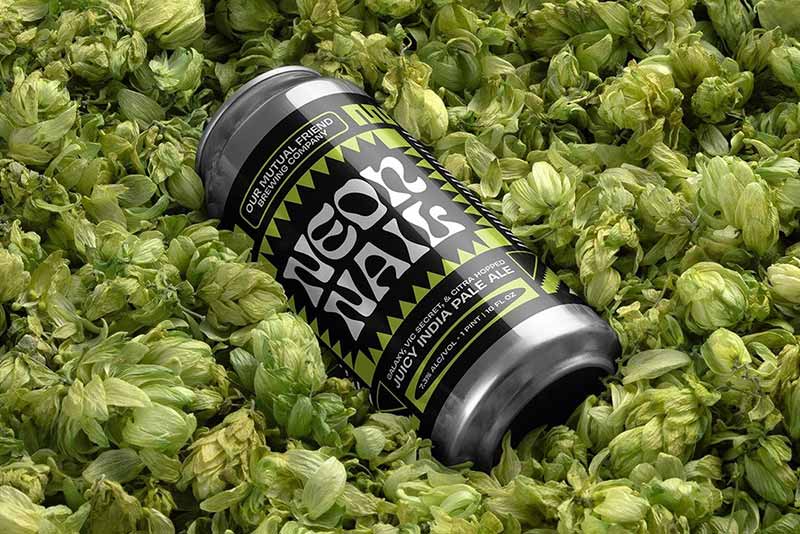
Photography courtesy of @omfbrewing
Almost universally, all the brewers noted how the Citra hop varietal is perfect for the hazy IPA. That said, it isn’t the only hop they’d use.
“Citra or Mosaic can kick off some citrusy notes; those are kind of my two go-to hops right off the bat,” Chodkowski says. Though he leans toward the citrus-heavy hops, Chodkowski says he likes a little dankness in his hazy and some mild hop bite.
“I know that might not be OK for a lot of other brewers,” he says, “but it’s OK by my standard.”
While noting that his Two Juicy hazy IPA showcases Citra, Markowski likes to lean into the German varietals for his brew.
“I’ve long been a fan of the German varieties for adding flavor,” he says, noting that Two Juicy uses Mandarina Bavaria and Hallertauer Blanc in addition to Citra. “Mandarina has a citrus component, but it’s more restrained and refined. It’s a way to get some citrus, some herbal component, and some typical hop characteristics as well… Obviously, the Citra is going to do its thing, but it’s a mix we tested and liked and stuck with it.”
For WeldWerks Juicy Bits, Schwartz says they use a combination of Mosaic, Citra, and El Dorado hops. While not disclosing when they add hops during the brewing process, he says they do not add any hops into the kettle, instead using all the hops in the whirlpool and dry hop.
“In the whirlpool, we usually use between two to three pounds per barrel,” Schwartz says. “For our single hazy IPA, we dry hop six days before transferring to the brite tank. This hop charge is usually between two and a half to four pounds per barrel.”
Cerebral’s house hazy IPA, Rare Trait, uses the same three hops as WeldWerks: Mosaic, Citra, and El Dorado. They also mash hop—something they do with all their hazies, Buchan says—using half a pound per barrel of Cascade hops. In the whirlpool, Cerebal adds one pound per barrel of Citra and uses a hop knockout of about a barrel of wort at 180 degrees with Mosaic Incognito; they use El Dorado during the dry hop phase.
Brewers' Biggest Tip for Brewing a Hazy IPA
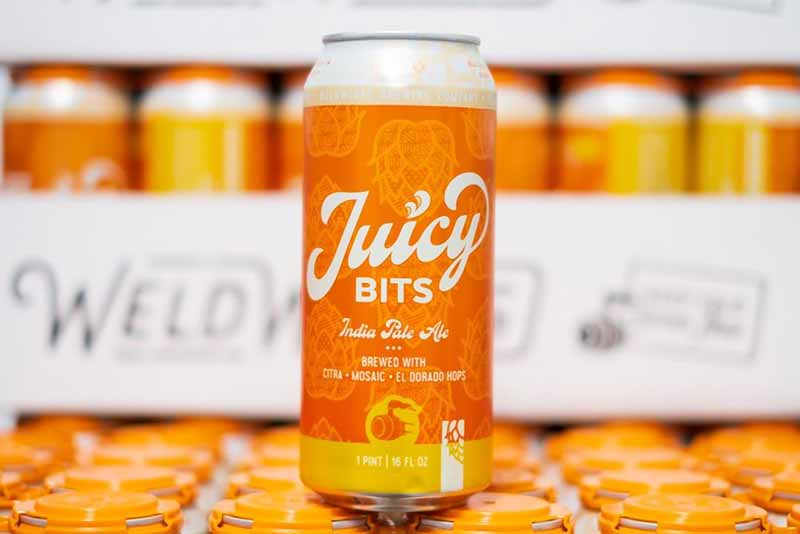
Photography courtesy of @weldwerksbrewing
In speaking with multiple brewers for this piece, the one consistent tip shared was about ingredients and being mindful of what you’re using in your hazy IPA recipe.
“The first step is learning what you like, and from there, learning how to create or expand on it,” Schwartz says.
Buchan says for Cerebral to brew the best version of a hazy IPA, it was helpful for them to understand their raw ingredients. He would advise anyone embarking on that mission to do the same.
“It can be easy, for a new IPA, to toss hops at it, but you should really evaluate what hops bring and what they might bring together,” he says. “Just know what your raw ingredients are going to provide before you commit.”
Chodkowski says that for small breweries, it can sometimes be hard to get the freshest lots of raw ingredients, but that shouldn’t stop them from pursuing the best ingredients.
“Try different suppliers,” he says. “And don’t be afraid to switch suppliers if you’re not liking whatever you’re getting; it’ll make your beer better.”
Four Examples of Successful Hazy IPAs
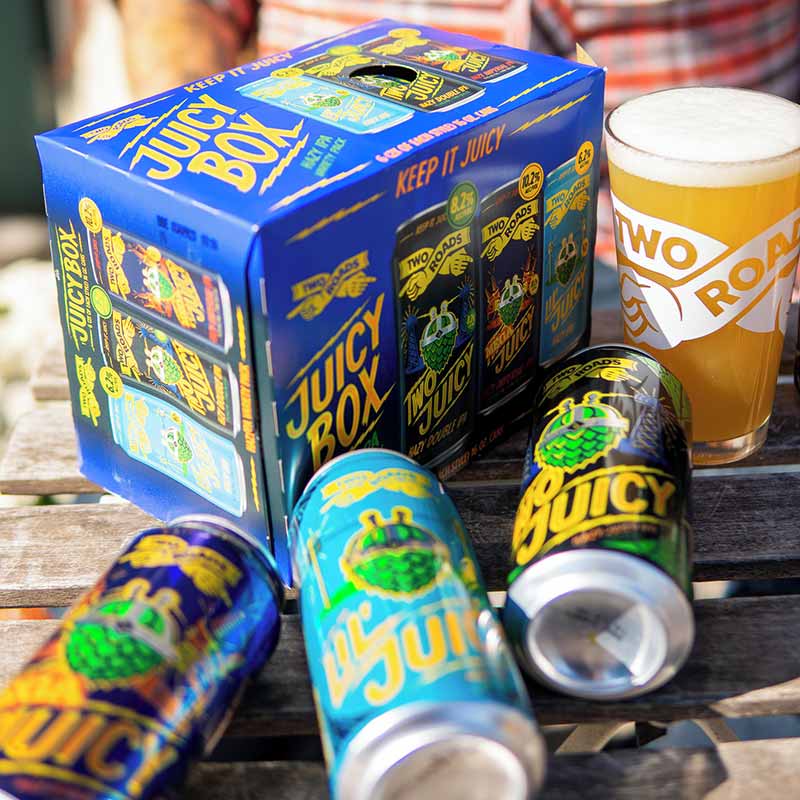
Photography courtesy of @tworoadsbrewing
Two Roads has its Two Juicy hazy DIPA, which features Citra, Hallertauer Blanc, and Mandarina Bavaria hops. The 8.2% ABV hazy has a slight bitterness but is loaded with juicy notes, including grapefruit, lychee, orange, and tangerine, as well as some undertones of pine.
Juicy Bits is WeldWerks’ flagship IPA. The citrus and tropical hop character comes from the Mosaic, Citra, and El Dorado hops that shine in this 6.7% ABV hazy. WeldWerks says it essentially drinks like juice with extra pulp.
Cerebral’s Rare Trait is its house IPA. The 6.4% ABV hazy, much like Juicy Bits, features Mosaic, Citra, and El Dorado hops. Cerebral describes Rare Trait with hints of tangerine, mango, and candied peach with a subtle bitterness.
Our Mutual Friend Brewing Company’s Neon Nail hazy IPA is its flagship, with Vic Secret, Galaxy, and Citra hops, giving off notes of nectarine, orange, and passion fruit.
A Final Piece of Advice for Brewing Hazy IPAs
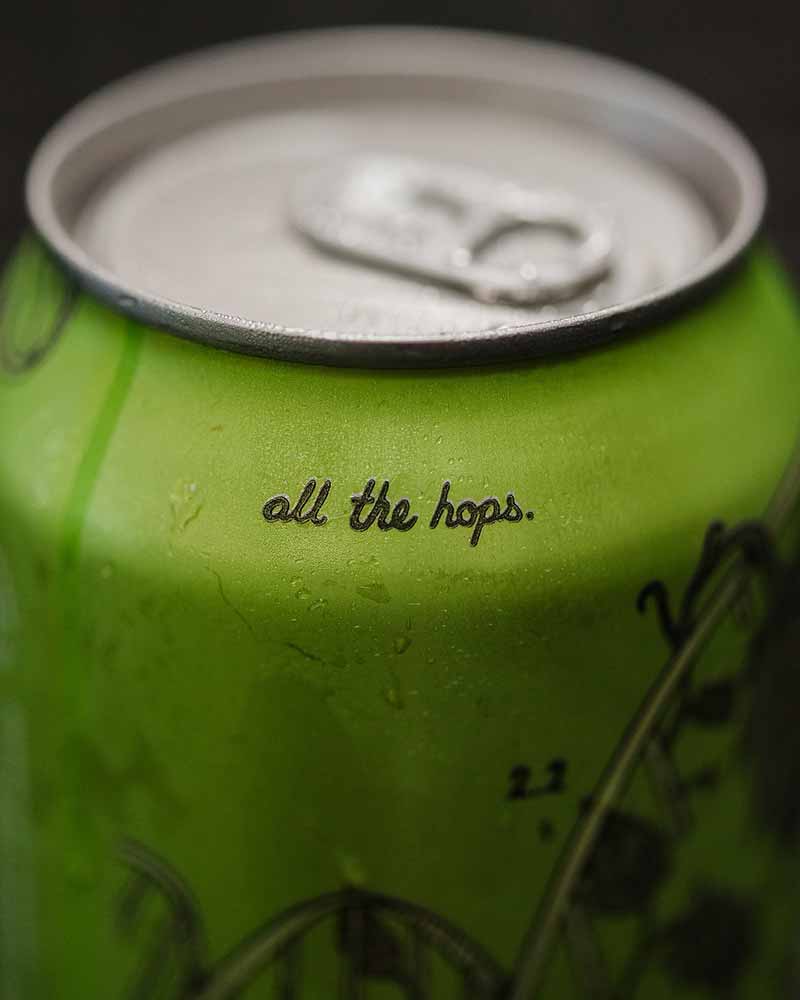
Photography courtesy of @cerebralbrewing
No brewer is perfect. But the four brewers we spoke to here seemed to have a similar message regarding brewing great hazies: If nothing else, be honest with yourself, and experiment with an eye to improving.
“Don’t be afraid to make mistakes and know that no matter how hard you try, you aren’t going to make everyone happy,” says Schwartz.
Buchan says, “Ask questions to your peers and find out what you can learn from them… It’s beneficial to everyone if we have open conversations about processes that we find that work.”
Luckily, with over 9,500 breweries in the country now, there is a plethora of resources right at your fingertips…and your lips.
“Seek other highly regarded hazy IPAs and drink other people’s beer,” Chodkowski says. “You can still learn and incorporate new techniques and make the beer better.”



